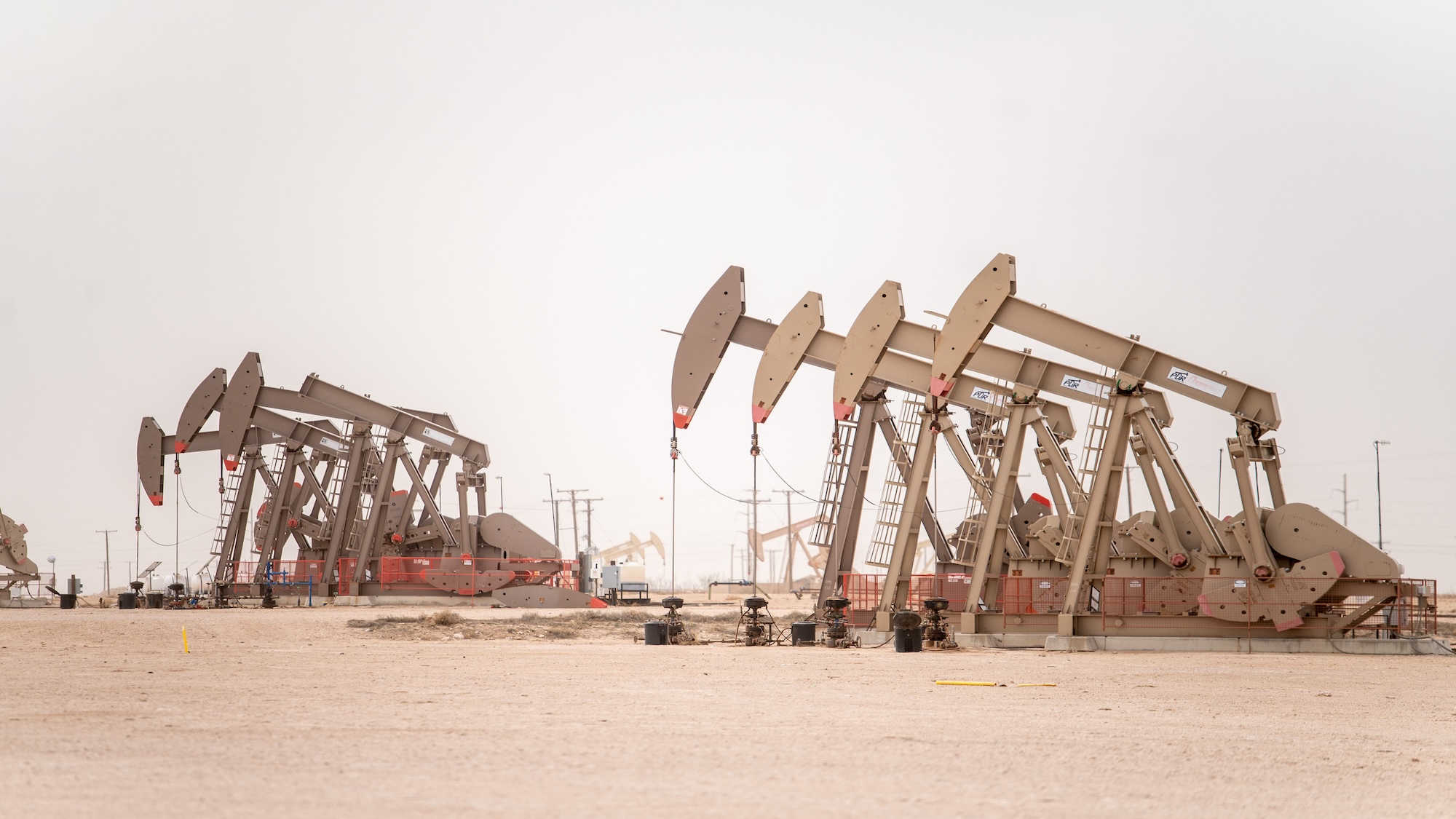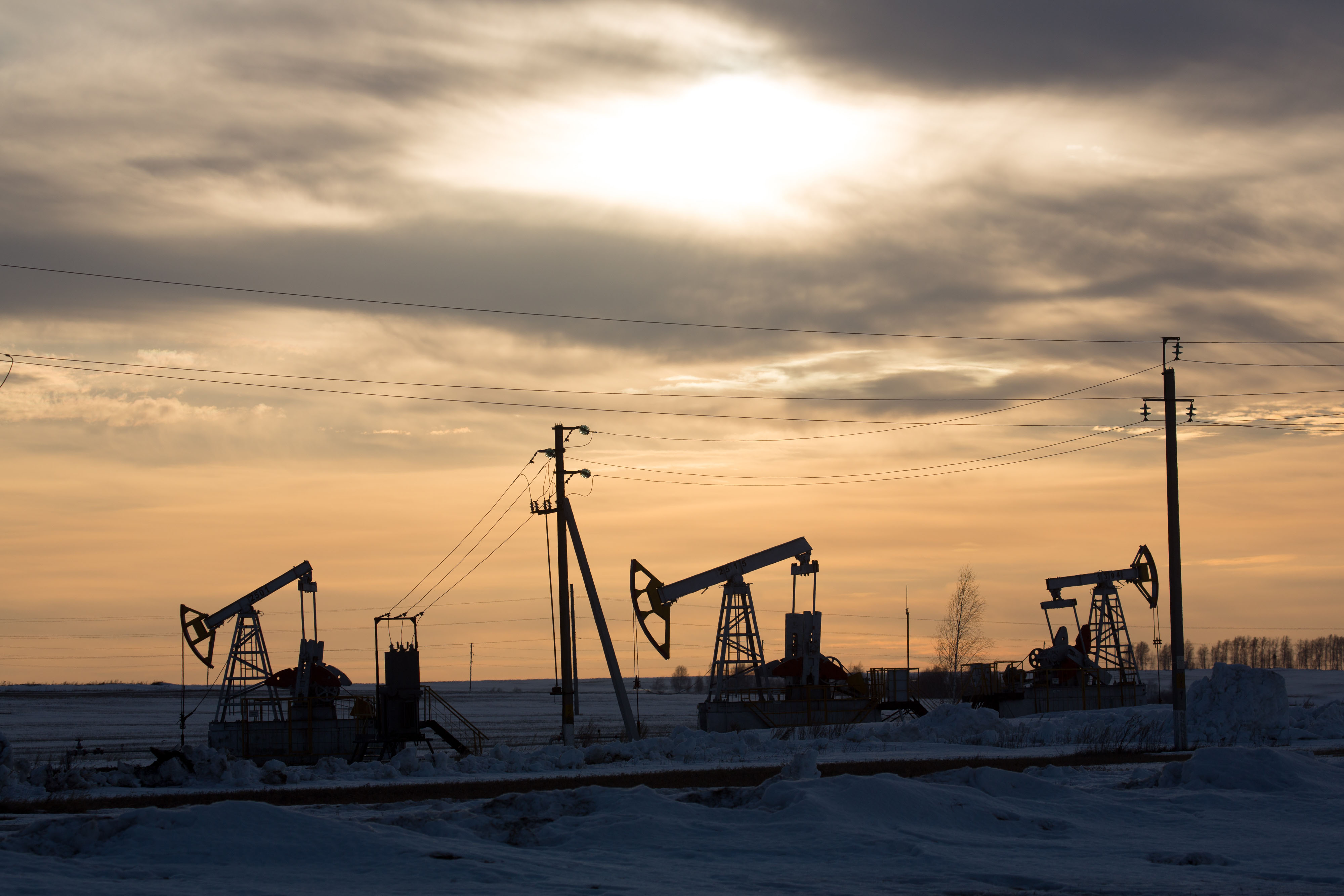Oil price posts two-year highs - but how long can it last?
Brent rose above $59 a barrel this week, its best third-quarter showing since 2004

Oil price: North Sea slump 'to close 150 platforms by 2026'
8 February
North Sea oil production is likely to be hit by a spate of platform closures over the coming decade, as persistently low prices leave companies across the sector nursing losses.
A report from consultancy Douglas-Westwood into likely decommissioning over the coming 25 years found that more than half is likely to take place between 2019 and 2026, says the BBC. This would mean almost 150 platforms closing over the coming ten years.
The Week
Escape your echo chamber. Get the facts behind the news, plus analysis from multiple perspectives.

Sign up for The Week's Free Newsletters
From our morning news briefing to a weekly Good News Newsletter, get the best of The Week delivered directly to your inbox.
From our morning news briefing to a weekly Good News Newsletter, get the best of The Week delivered directly to your inbox.
The estimate comes as separate studies show the extent of the damage the more than decade-low oil price has wrought on the sector in the UK. Wood Mackensie reported on Friday that more than one in seven barrels produced in the North Sea is now being sold at a cash loss, with the additional costs of operation leaving around half of all producers in the red, according to Company Watch.
This latter research, commissioned by the Financial Times, revealed that around half of the 22 UK-listed companies that produce oil in the UK's territory are currently operating at a loss, with the deficit accumulated by these businesses over the past 12 months totalling £6.4bn. Wood Mackensie reckons around the world at least 3.4 barrels of oil a day are being produced at a loss.
Over the next decade, oil is unlikely to recover to the strongly profitable levels of $100 or above that had persisted prior to the ongoing crash. Ian Taylor, the chief executive of Vitol Group, the largest oil trader in the world, told Bloomberg prices were likely to remain in a tight band from $40 to no more than $60 a barrel for "five to ten years" as supply remains high and demand wanes.
At the lower end of this range, there would be little recovery in prices from current levels around $35 – and even at the top end, much production around the world would only just be turning a modest profit, as $50-$70 is seen as a break-even point for a lot of operators in areas such as the North Sea, the US and Canada.
A free daily email with the biggest news stories of the day – and the best features from TheWeek.com
The oil price was heading south again in early trading in London this morning, down 1.4 per cent to $33.60.
Oil price may be sub-$30 at the end of the year
5 February
The oil price has been on a bumpy road in the past week to say the least, even if it has been overall much more positive than the slump that persisted throughout January.
"A string of bullish indicators like a slump in the dollar and potential talks on output cuts clashed with bearish reports of record US crude inventories, higher output and a slowing global economy," says CNBC, explaining the recent fluctuations. The US crude oil price has traded in a wide 19 per cent range during the week and seen one-day swings of as much as 11 per cent.
After hitting a near 13-year low of $27 a barrel at the end of last month, international benchmark Brent crude has been as much as a third higher in February already, at close to $36. However, since rumours of coordinated deal talks have petered out in the past couple of sessions, its rally has waned and it was a little above $34 overnight.
Some, including analysts at Citi, have speculated the improved, if unstable picture this month points to a floor being established and that oil will not dip back below $30. But this is not the first time a bottom of the slump has been called – and yesterday, Morgan Stanley revised its own predictions lower to show the oil price going back below this threshold by the end of 2016.
Market Watch notes the bank reckons oil will remain rooted at around $30-$31 a barrel for the first three quarters of the year as a global glut continues, before nudging lower to average $29 in both the final quarter of this year and the first three months of 2017. It is not predicting a return to a modest – and barely break-even, in many cases - $50 a barrel until the final months of next year.
Even oil major Shell is forecasting similar short-term weakness. Speaking as the company reported an 80 per cent fall in four-quarter profits, its chief executive, Ben van Beurden, told The Times he is "sure" prices could yet go lower and that the market will rally from lows in the $30s "later this year, maybe early next year".
Oil price: why is it rising despite evidence of global glut?
04 February
The oil price rose on Wednesday and is now back above $35 a barrel, even despite another huge build in US crude stockpiles last week that suggests the global supply glut is only getting worse.
Latest data from the US Energy Information Administration revealed another 7.8 million barrels had been added to domestic reserves last week, said the Wall Street Journal. This was a far bigger gain than had been expected by analysts and boosted US stockpiles to 503 million barrels.
This is the biggest total recorded in the weekly data since records began in 1982, while in monthly data, which "don't line up exactly" with the weekly numbers, the 500 million barrel barrier has not been breached since 1930. The US – and the world – is still swimming in oil and production remains at least one million barrels a day above demand.
So why did the price of international benchmark Brent crude jump more than seven per cent and end two days of decline?
In relation to the data, it is refinery maintenance season in the US and so growth in reserves was expected, even if the actual number was on the high side. "Even though [the crude inventory build] was a shocking number, I think a lot of people… knew a big build was coming," said Phil Flynn, an analyst at Price Futures Group.
Then there was the forecast in the report for the hitherto resistant domestic shale oil supply to finally begin to show a more sizeable decline this year, reports The Times, by 620,000. This would more than offset the half a million barrels Iran is expected to add to the market and would start to rebalance excess supply.
Away from the EIA figures, the dollar slumped yesterday after weak data on the US services sector pushed back expectations of when the Federal Reserve will again raise interest rates. A weaker dollar makes oil cheaper for overseas consumers in big markets such as China, which is seen as positive for demand.
Finally – and arguably most importantly – the market continues to trade oil up on hopes of a deal among oil-producing nations to cut exports from their multi-year highs. Last night, there were reports that several members of Opec and Russia, the key non-Opec oil power, are set to meet to discuss coordinated action.
The fly in the ointment that could yet undermine the current rally is that Saudi Arabia, the largest producer within and de facto leader of Opec, is not expected to be at the table. This would undermine the effectiveness of any agreement and could yet turn sentiment negative again.
Oil price: supply deal in doubt until 'prices are lower'
03 February
Oil prices dropped for a second day on Tuesday, as doubts grew over a deal to co-ordinate supply cuts and data continued to show relentless output growth.
Figures published yesterday revealed that Russia, one of the largest oil producers in the world and the main power outside the Opec cartel, pumped at record levels for the post-Soviet Union era in January. The country produced 10.88 million barrels a day last month, the Daily Telegraph says, an increase of around 80,000 barrels on December.
The huge uptick in output undermined comments from Russia's foreign minister, Sergey Lavrov, that the country was still ready to meet with Opec officials this month, referencing an apparent offer last week to agree export cuts of five per cent.
The emergence of Iran from international sanctions has pushed Opec production up to a multi-year high of 32.6 million barrels a day.
In addition, despite the financial pain apparently being suffered by US shale oil producers, drilling remains robust there, too. Data due later today is expected to show a build in already record domestic crude oil stockpiles of 4.8 million barrels, according to CNBC.
Many analysts consider the figures to show that the main producers are still locked into their strategy of securing market share by maintaining production, even despite the severe effects of the supply glut. Russia is suffering its worst recession in six years, Saudi Arabia is managing a hefty budget deficit and global oil producers including the likes of BP and ExxonMobil are seeing slumping profits.
"For whatever reason, there's a lot of hope that some deal will be pulled off," said John Kilduff, a partner at Again Capital LLC in New York. "As they continue to disappoint, we're going to trade lower until the market forces them to do something, and I think that's at a much lower price than here."
There are those, though, who believe the oil price has hit bottom and that, however much they may wobble until supplies are finally cut, prices will not plough the depths of $10 predicted by some. In a note yesterday, Citi said oil would not return to the $20s and that the current low level would be "short-lived".
Oil price slump prompts surprise BP loss - and there's no respite in sight
02 February
British oil major BP slumped into the red in the final three months of 2015, providing fresh evidence of the toll being wrought by the slump in the price of crude oil.
After Shell reported earlier this month that its fourth-quarter profits had halved, BP this morning shocked even pessimistic analysts by posting a $2.2bn (£1.5bn) loss for the three months to December, the Financial Times notes. According to the Daily Telegraph, this meant it racked up losses of $5.2bn for 2015 as a whole.
The negative figure for the final months of the year were caused mainly by writedowns on the value of its oil fields and restructuring costs that totalled $2.6bn. But even underlying operating profits slumped to $196m, well down on last year's $2.2bn and short of analyst forecasts of $730m, despite record profits in its refinery and marketing businesses.
BP has said it will make further cutbacks, including shedding another 3,000 jobs on top of the 4,000 announced last year, to continue to "adapt and rebalance… for the changing environment". Bosses said even more could follow if "current conditions persist" for longer than expected.
There is little sign that oil prices are set for the sort of sustained rally that would alleviate pressure on oil majors. Having hit close to $36 a barrel earlier this week, the price of international benchmark Brent crude has slipped back below $34 as hopes for a deal to limit excess supplies fades.
CNBC reports that an Opec official told a Saudi Arabian newspaper it was "too early" for an emergency meeting on coordinated supply cuts, as Russian officials had claimed was in the offing last week. The cartel is riven with disputes and it is highly likely that Iran's return to the global export market will prevent the Saudi-led bloc from reaching an accord, let alone reach out to non-Opec members.
"Seems like every time market participants say prices have bottomed, they've been wrong," said Dominick Chirichella, senior partner at Energy Management Institute in New York.
"There's nothing that says prices have bottomed — supply is still greater than demand by a lot, Chinese demand may be slackening, the global economy may be slackening and the likelihood of an OPEC emergency meeting seems very low, as it did last week."
-
 A lemon-shaped exoplanet is squeezing what we know about planet formation
A lemon-shaped exoplanet is squeezing what we know about planet formationUnder the radar It may be made from a former star
-
 Political cartoons for January 4
Political cartoons for January 4Cartoons Sunday's political cartoons include a resolution to learn a new language, and new names in Hades and on battleships
-
 The ultimate films of 2025 by genre
The ultimate films of 2025 by genreThe Week Recommends From comedies to thrillers, documentaries to animations, 2025 featured some unforgettable film moments
-
 How might the Israel-Hamas war affect the global economy?
How might the Israel-Hamas war affect the global economy?Today's Big Question Regional escalation could send oil prices and inflation sky-high, sparking a worldwide recession
-
 Recent mega-mergers could signal a turning point for the US oil industry
Recent mega-mergers could signal a turning point for the US oil industryTalking Point Both Chevron and Exxon have recently spent billions to acquire smaller oil companies
-
 Has Saudi Arabia lost control of oil prices?
Has Saudi Arabia lost control of oil prices?Today's Big Question Kingdom goes it alone to cut production, risking tension with US and reigniting cooling inflation in Europe
-
 US angered by Opec+ oil cut
US angered by Opec+ oil cutSpeed Read Energy prices to rise further as producers slash supply by two million barrels a day
-
 Global oil demand forecast lowered for 2020 and 2021
Global oil demand forecast lowered for 2020 and 2021Speed Read IEA report says jet fuel demand remains the major source of weakness
-
 Are US-Iran tensions flaring again?
Are US-Iran tensions flaring again?In Depth Trump threatens military action over Twitter
-
 Can a deal be struck to raise oil prices?
Can a deal be struck to raise oil prices?In Depth Opec+ will convene today over video link in a bid to boost crude
-
 What do negative oil prices mean?
What do negative oil prices mean?In Depth Perfect storm of oversupply and storage shortages sees producers paying to get rid of US crude